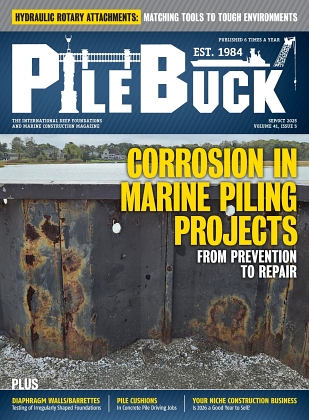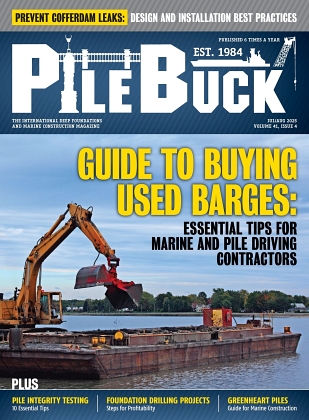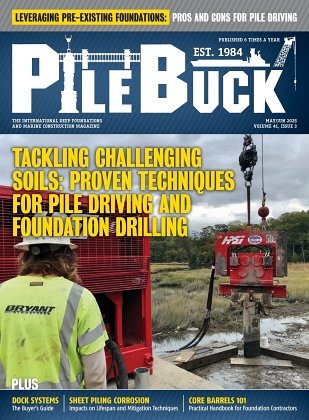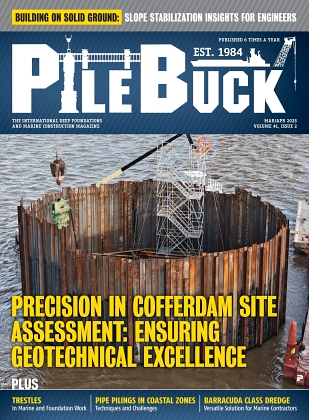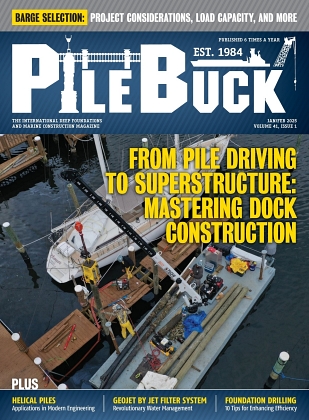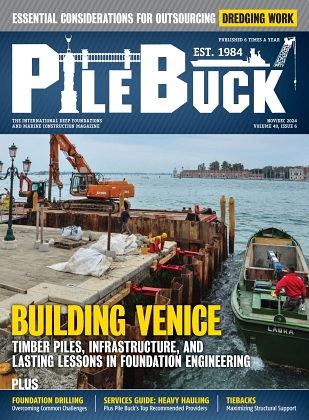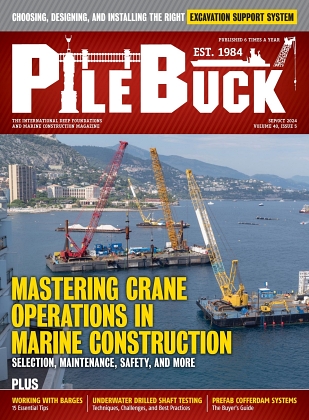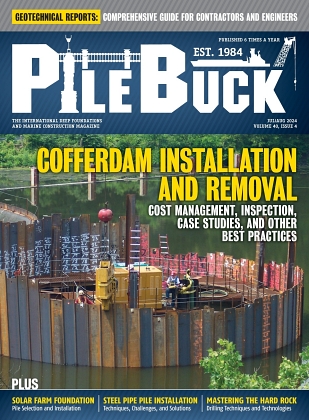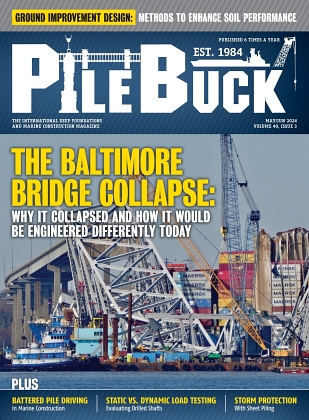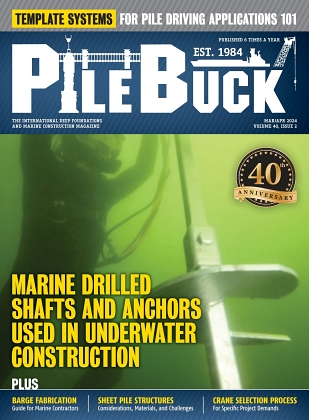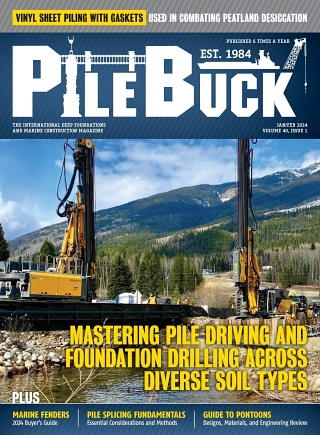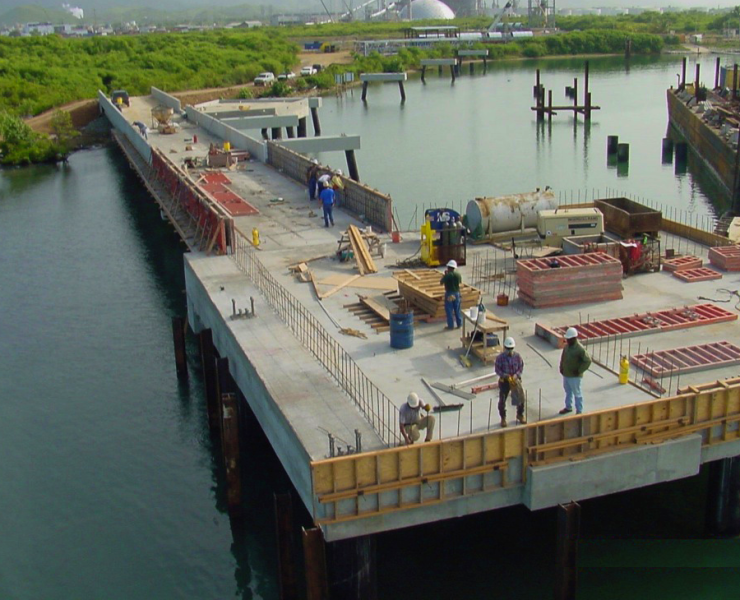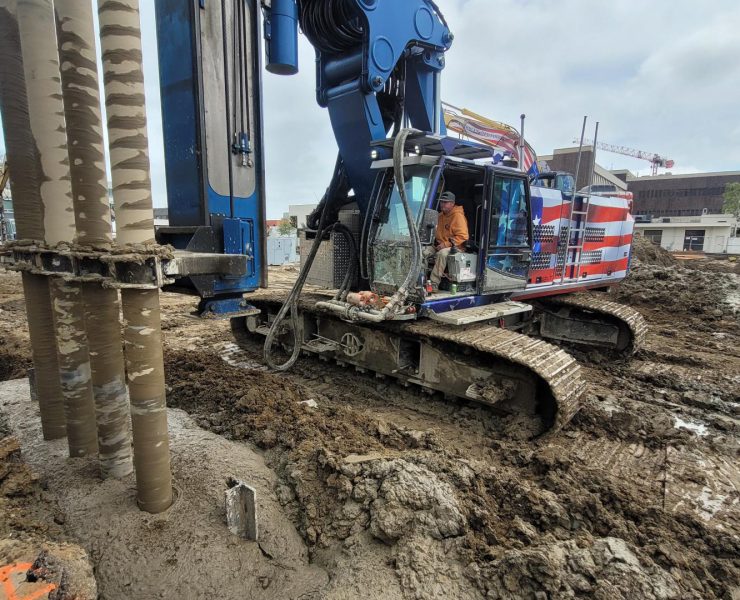Selecting the Ideal Hydraulic Rotary Attachment: Matching Tools to Tough Environments
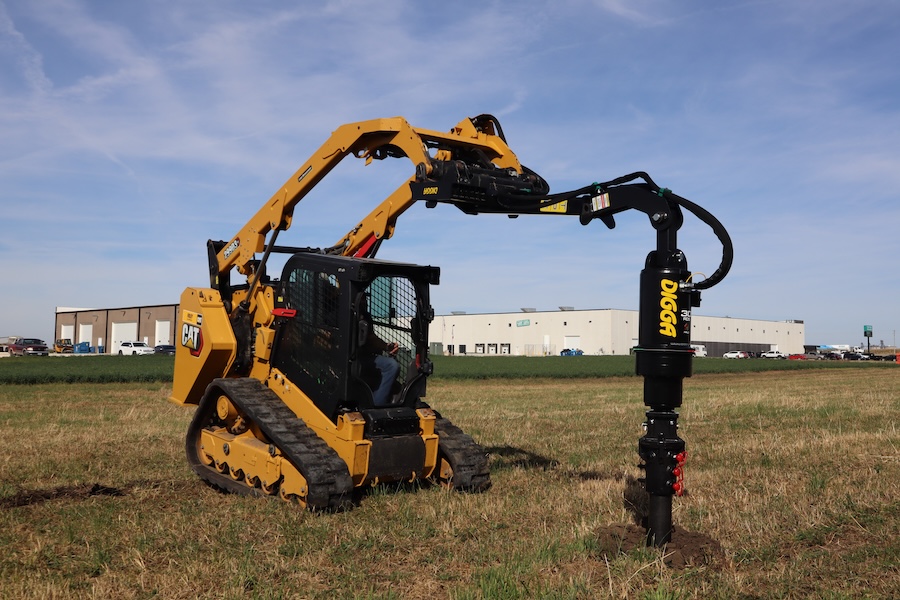

View the complete article here.
Hydraulic rotary attachments offer unmatched efficiency, precision, and reduced noise/vibration that minimize site disruptions while enabling versatile drilling and installation methods. These attachments— typically mounted on excavators or other carrier machines—thrive in demanding projects like urban high-rise developments, bridge constructions, marine infrastructure, and constrained sites such as indoor renovations or river crossings where traditional rigs would be impractical.
But with so many options available—selecting the right one depends on matching the attachment to your project’s specific environment, soil conditions, and operational needs. This guide explores key considerations to help you make an informed choice, drawing on industry best practices.
Understanding Hydraulic Rotary Attachments
Hydraulic rotary attachments—such as auger drives, rotary heads, or helical pile installers—convert the hydraulic power of an excavator into rotational force for drilling holes or screwing piles into the ground. They are particularly useful in pile foundation construction, where they facilitate methods like bored piling or secant piling for enhanced structural integrity. Unlike impact or vibratory hammers—rotary attachments excel in controlled, torque-based operations—making them suitable for environments where precision is key.
When selecting an attachment, start with the basics: compatibility. Ensure the attachment matches your excavator’s specifications—including hydraulic flow rate (in gallons per minute, or GPM), pressure (in PSI), weight class, and mounting configuration. A mismatch can lead to inefficiency, equipment damage, or safety issues. For instance, a high-torque rotary head requires robust hydraulic capabilities to avoid overheating or underperformance.
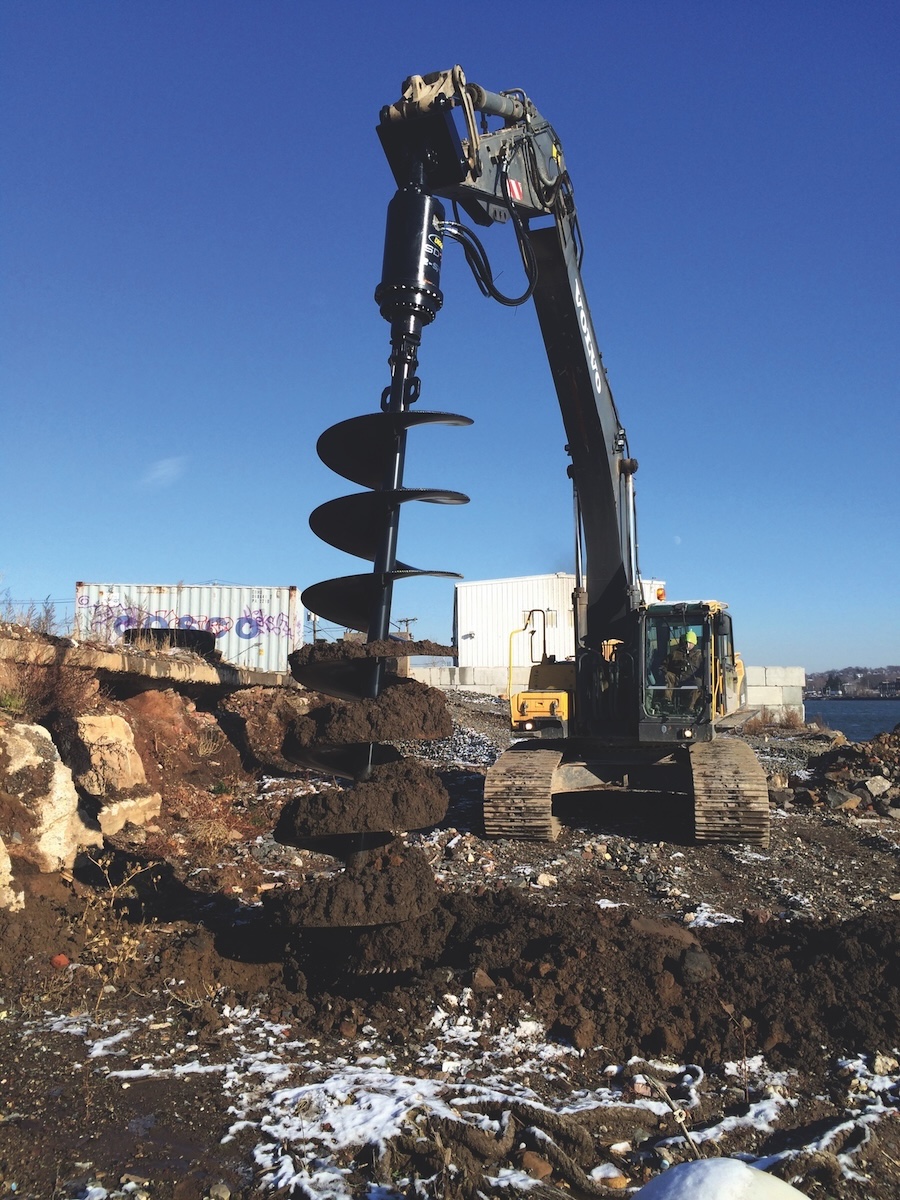
Key Factors in Selection
A thorough evaluation ensures the attachment not only performs well but also aligns with long-term project goals and budget constraints. Consider these universal factors…
Torque and Speed Requirements
Higher torque is essential for dense soils, while variable speed allows adaptability across projects. Assess the maximum torque output needed based on soil resistance and pile diameter—insufficient torque can cause stalling in hard ground, while excessive speed might lead to poor hole quality in softer materials.
Drilling Tools and Accessories
Attachments often come with interchangeable tools like augers, buckets, or core barrels. Choose based on pile type, like rock augers for hard ground or continuous flight augers for cohesive soils. Consider compatibility with extensions for deeper drilling and quick-change systems for efficiency on multi-task sites.
Project Scale and Depth
For deep foundations, opt for attachments that support extensions for greater reach. Factor in pile length and diameter, as different models handle varying depths and scales—larger projects may require attachments with higher power ratings to maintain productivity without frequent downtime.
Maintenance and Durability
Look for models with sealed gearboxes and corrosion-resistant materials to withstand harsh conditions. Evaluate the manufacturer’s reputation for quality and after-sales support, including availability of spare parts—as this impacts long-term reliability and reduces repair costs.
Cost and Efficiency
Balance upfront costs with long-term benefits like reduced fuel consumption and faster cycle times. Consider total ownership costs, including energy efficiency and integration with existing fleet equipment to minimize additional investments.
Noise, Vibration, and Power Source
In sensitive areas, prioritize low-noise and low-vibration models. Also, evaluate the power source—ensure it matches your machine’s hydraulic system for optimal performance and environmental compliance.
Soil Conditions and Pile Type
Tailor the attachment to anticipated soil types (e.g., clay, sand, rock) and pile materials, as this influences load-bearing capacity and driving force requirements.
Consulting with dealers or manufacturers can provide tailored recommendations, including quick couplers for easy swaps between attachments.
Tailoring to Specific Environments
Environments vary widely in pile driving, from urban constraints to challenging terrains. Here’s how to choose accordingly…
Urban and Noise-Sensitive Areas
In city settings or near residential zones, regulations often limit noise and vibration. Hydraulic rotary attachments shine here due to their quieter operation compared to diesel hammers. Opt for models with variable speed controls and low-vibration designs to minimize disturbance. For example, a compact rotary head on a mini-excavator allows maneuverability in tight spaces—ideal for foundation work in buildings or infrastructure retrofits. Consider attachments with integrated dust suppression for air quality compliance. Key tip: Prioritize efficiency to reduce on-site time, as urban projects often face strict timelines.
Soft Soil or Wetland Environments
Soft, cohesive soils or wetlands demand attachments that prevent slippage and maintain stability. High-torque, low-speed rotary drives are crucial for penetrating without excessive spoil displacement. In marine or amphibious settings, choose corrosion-resistant materials like stainless steel components to combat saltwater exposure. Attachments compatible with floating or tracked excavators, such as helical pile drivers, excel in these conditions by screwing piles directly into unstable ground for quick installation. Look for models with sealed hydraulics to avoid contamination from mud or water.
Rocky or Hard Ground Terrains
For rocky environments, durability is paramount. Select attachments with reinforced gearboxes and rock-specific tools, like carbide-tipped augers or core barrels, to handle abrasive materials. Higher power ratings ensure consistent torque without stalling, and variable flow options allow adjustments for varying hardness. In mountainous or quarry-like sites, prioritize attachments that integrate with larger excavators for added stability and reach. Safety features, such as overload protection, prevent damage during tough drilling.
Offshore or Marine Construction
Offshore projects introduce unique challenges like wave action and deep water. Hydraulic rotary attachments for marine pile driving should be lightweight yet robust, often mounted on barge-based excavators. Focus on models with high-pressure hydraulics for deeper penetration and anti-corrosion coatings. Versatility is key—attachments that support both rotary boring and vibratory assistance can adapt to shifting seabeds.
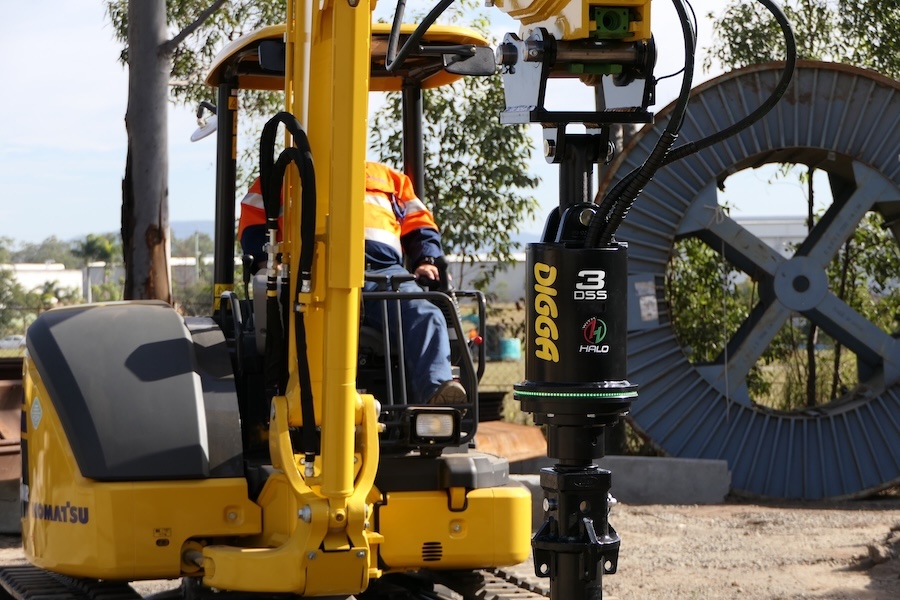
Common Challenges and Solutions
No matter the environment, challenges like equipment mismatch or environmental impact can arise. Addressing them proactively through planning and maintenance can prevent costly delays and ensure project success.
Equipment Mismatch
Pairing an attachment with incompatible excavator specs, such as mismatched hydraulic flow, can cause underperformance or failures. Solution: Conduct thorough compatibility checks and consult manufacturer guidelines before purchase—use flow regulators if needed.
Hydraulic Leaks and Contamination
Worn seals, damaged hoses, or exposure to dirt and moisture lead to leaks—reducing efficiency and posing safety risks. Solution: Implement regular inspections, replace seals promptly, and use protective covers in harsh environments.
Varying Soil Conditions
Unexpected changes in soil types can cause borehole collapse or uneven penetration. Solution: Perform pre-construction soil tests and select versatile attachments with adjustable settings—have backup tools on-site for quick adaptations.
Operator Skill Shortages
Inexperienced operators may mishandle attachments, leading to damage or inefficiencies. Solution: Provide comprehensive training programs and ensure access to skilled personnel—leverage user-friendly models with intuitive controls.
Environmental and Load Challenges
Harsh conditions like extreme temperatures or complex loads (radial, axial, moment) can strain components. Solution: Choose durable, weather-resistant materials and monitor load capacities during operation.
Regular maintenance, including checking hydraulic connections and lubricating rotary components, extends lifespan. For multi-environment projects, versatile attachments with modular designs offer flexibility without multiple purchases.
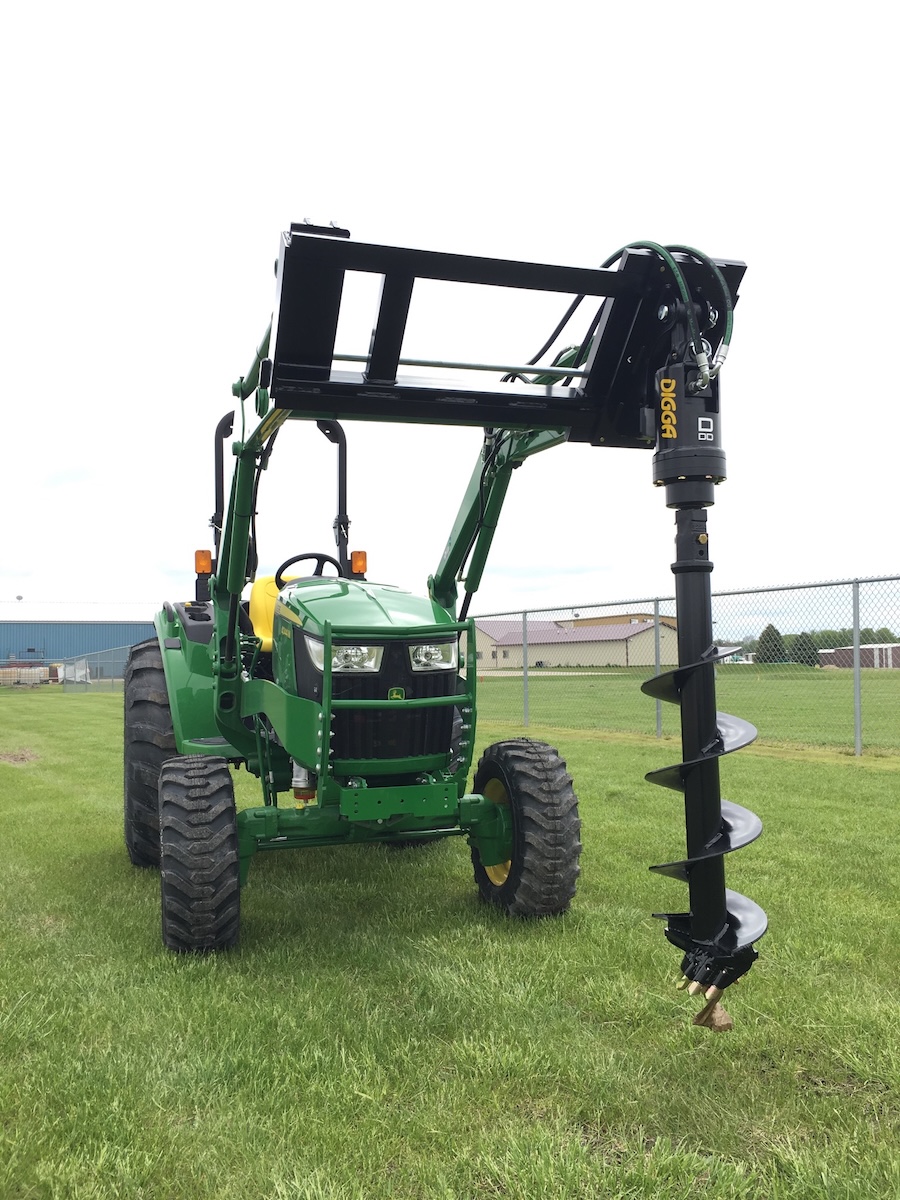
Best Practices
To maximize the effectiveness and longevity of hydraulic rotary attachments, follow these industry-recommended best practices…
Safety Protocols
Always remove twists and kinks from hydraulic hoses before use, and never rely solely on hydraulic jaws to hold piles—attach a hoist line for added security. Conduct daily inspections to identify potential hazards.
Environmental Considerations
Protect attachments from runoff by placing them on plywood and covering with plastic. Adhere to best management practices for minimizing noise, vibration, and ecological impact—especially in sensitive areas.
Operational Efficiency
Use controlled hydraulic pressure for steady pile installation, and select attachments with adjustable grips for stable load transfer in tight or challenging sites.
Maintenance Routines
Regularly lubricate components, check for wear, and follow manufacturer guidelines for mandrel use if applicable to prevent pile collapse.
Equipment Selection and Training
Base choices on project-specific criteria like soil and pile type, and invest in operator training to handle various scenarios effectively.
By integrating these practices, contractors can enhance productivity while reducing risks and downtime.
View the complete article here.
How do I choose the right hydraulic rotary attachment for my project?
Match the attachment to your excavator, soil type, pile size, and site environment for optimal performance.
How can I ensure hydraulic rotary attachments last longer and work efficiently?
Follow regular maintenance, proper lubrication, and operator training while using environment-appropriate models.

